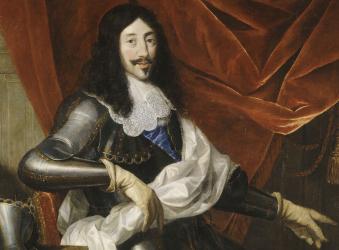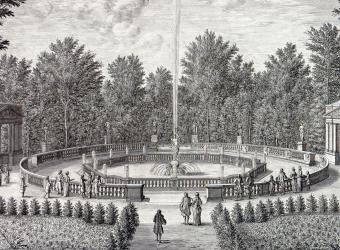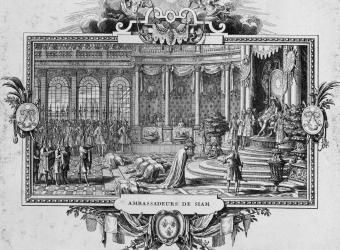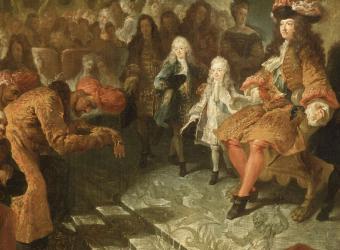At the end of the War of the League of Augsburg (1689-1697), France and the Duchy of Savoy sealed their reconciliation with a new dynastic union: the marriage of the Duke of Burgundy to Marie-Adélaïde of Savoy. The only one of their children to survive the measles epidemic that killed the duke and duchess too was the future Louis XV.
Marriage of the Duke of Burgundy to Marie-Adélaïde, 1697 December 1697
On 11 and 14 December 1697, Louis XIV held a ball in the Hall of Mirrors to celebrate the wedding of his eldest grandson, the Duke of Burgundy, to Marie-Adélaïde, the eldest daughter of the Duke of Savoy, Victor-Amedeus II. The groom was 15 years old and the bride was 12. The king, whose ambition was to resurrect the Court’s heydays, wanted the celebrations to be 'sublime'. The wedding was held on 7 December in the Palace chapel and marked the reconciliation between France and Savoy.
The Duchy of Savoy lay between France and Italy and was one of the strategic European powers of the era. Traditionally France’s ally, it turned against her during the War of the League of Augsburg, in which France fought a coalition composed of most of the rest of Europe. Savoy was the first to leave the coalition and signed a secret agreement with France on 30 May 1696 (the treaty of Pinerolo), which led to the Treaty of Turin on 29 August. Following this treaty, Louis XIV and Victor Amedeus II were, for a time, at peace. In 1703, though, during the War of Spanish Succession (1700-1713), Victor Amedeus II turned against Louis XIV once again.
ANECDOTE
On the night of the wedding, the going-to-bed ceremony for the young couple was held in accordance with etiquette, but the Duke of Burgundy remained by his wife for no more than 15 minutes, since the king had decided that the marriage would only be consummated two years later!
Despite these twists and turns of capricious loyalties, the Sun King remained very fond of the young Duchess of Burgundy. Her attractiveness and cheerful disposition, a marked contrast to her hunch-backed and overly pious husband, brought a breath of fresh air to the aging Court. Enraptured by her naturalness, which was rare in the Court, the king gave in to her every whim. The Duchess was the central topic of every conversation, and in 1698 the king renovated the Menagerie for her. He wanted “childhood to spread everywhere”. In that, he was fulfilled: the Duchess bore three heirs, all named Louis and born in 1704, 1707 and 1710.
Their first son died in 1707. In 1712 the couple was later struck by measles and died six days apart in February of that year, followed by their second son a month later. Only their youngest son, the Duke of Anjou and future Louis XV, survived the measles epidemic, possibly by having been locked away from the bloodletting doctors.... Despite the Duchess's air of naivete, letters discovered after her death revealed that she had been sending confidential information to her father, the never entirely reliable Victor Amedeus II of Savoy. “So the little devil was tricking us!”, Louis XIV declared to Mme de Maintenon.









